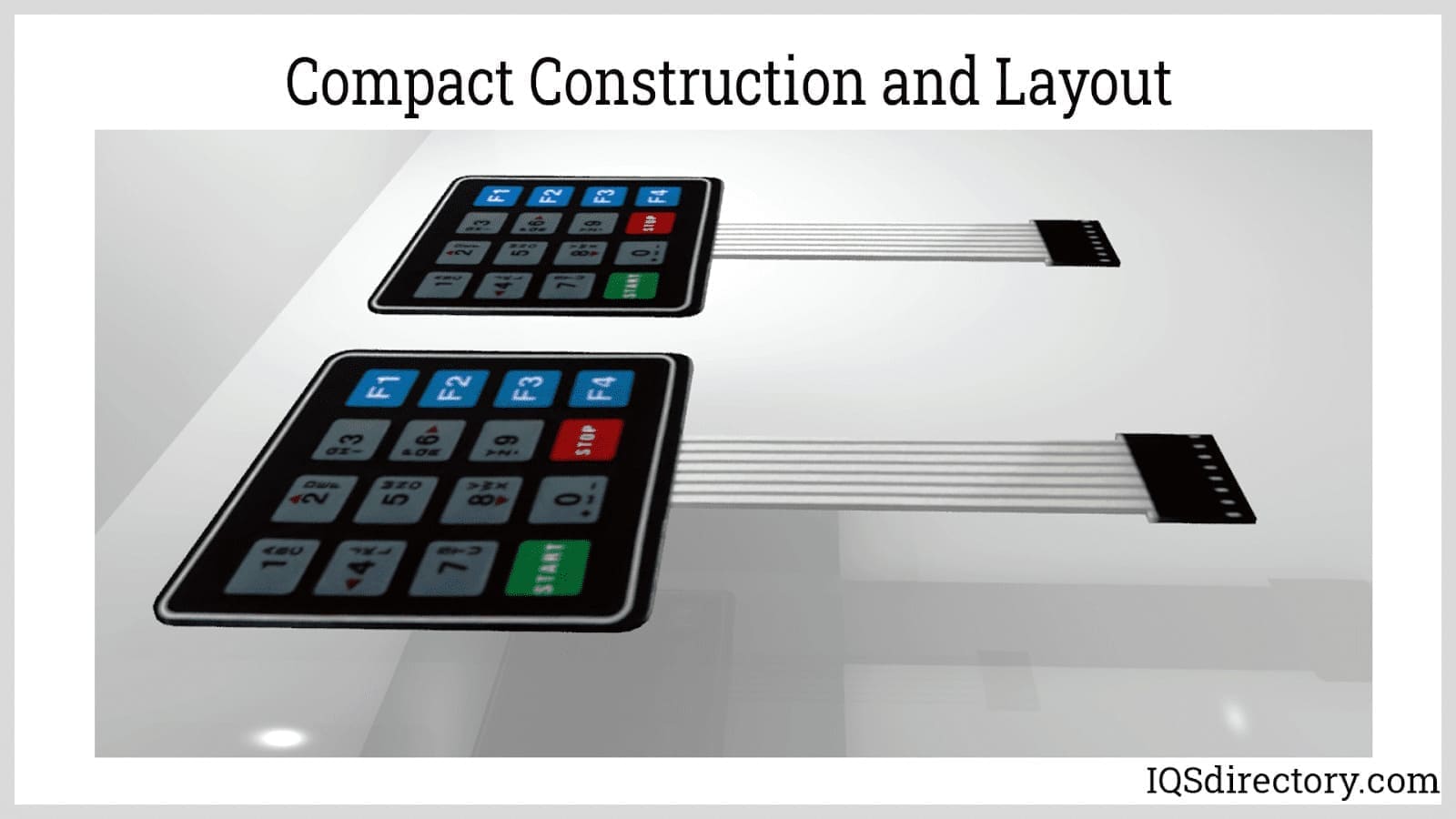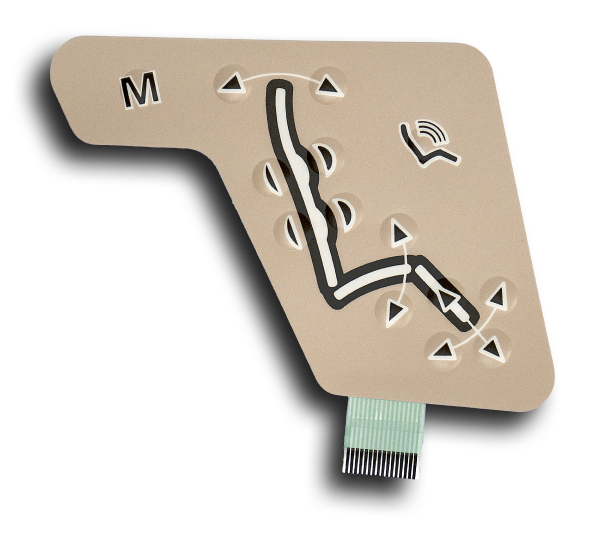Comprehending the Relevance of Membrane Layer Switch Over in Modern Electronic Devices
Membrane buttons are important elements in modern-day digital gadgets. They provide a blend of functionality and design that improves individual communication. Their resilient and light-weight nature makes them appropriate for numerous applications. As markets evolve, the need for customization and advanced attributes expands. Comprehending how membrane layer switches over contribute to development discloses their value fit the future of electronics. What exists ahead for this innovation?
The Basics of Membrane Layer Switch Technology
Usually ignored, membrane layer switch innovation plays an important duty in the contemporary electronics landscape. These gadgets, made up of multiple layers, act as interface for numerous digital products, ranging from family appliances to medical devices. A normal membrane button includes a visuals overlay, a spacer layer, and a circuit layer, which are diligently assembled to produce a practical interface.When stress is used to the overlay, the circuit layer is finished, allowing signals to be transmitted to the gadget. This innovation is known for its versatility, making it possible for personalization in form, style, and capability to satisfy specific customer demands. In addition, membrane switches are lightweight and thin, making them suitable for applications where space is a premium. Their sturdiness and resistance to environmental factors better improve their charm, ensuring they can withstand rough problems while keeping capability. Overall, membrane layer button modern technology is indispensable to developing user-friendly and reliable digital devices

Key Benefits of Membrane Layer Changes
Membrane switches over deal numerous crucial advantages that make them a recommended choice in numerous electronic applications. Their design enables for a portable type element, allowing makers to create light-weight and smooth tools. Furthermore, membrane buttons are immune to dust, dampness, and chemicals, which enhances their resilience and longevity in demanding atmospheres. The tactile responses offered by these buttons can boost customer experience, making them instinctive and simple to operate.Furthermore, membrane layer switches can be personalized with diverse graphics and shades, permitting special branding opportunities. The manufacturing procedure is generally affordable, specifically for high-volume manufacturing, as it decreases setting up time and simplifies design. Finally, membrane layer changes call for very little upkeep, adding to lower overall operational prices. These benefits highlight their expanding popularity in modern electronics, where reliability and easy to use interfaces are essential.

Applications Across Different Industries
The versatility of membrane layer switches enables their extensive fostering across numerous sectors. In the clinical field, they are generally utilized in analysis equipment and person tracking systems, supplying a resilient interface immune to contaminants. The vehicle sector uses membrane layer switches for control panel controls, improving individual experience with smooth designs that withstand severe conditions. In customer electronics, they serve as control board for tools such as microwaves and coffee makers, giving an user-friendly user interface that is easy to tidy. The aerospace sector uses membrane switches in cabin controls, where dependability and space effectiveness are extremely important. Additionally, the industrial market leverages these buttons in machinery and control systems to ensure robust procedure sought after atmospheres. This wide variety of applications emphasizes the adaptability of membrane switches, making them integral elements in boosting capability and user communication across diverse technological landscapes.
Personalization and Design Adaptability

Future Trends in Membrane Layer Switch Development
Arising trends in membrane layer button development indicate a growing focus on improved capability and integration home with smart modern technologies. As customer need for extra sophisticated digital gadgets increases, suppliers are focusing on creating membrane layer changes that not just offer fundamental functional duties however likewise integrate attributes like touch sensitivity, backlighting, and haptic feedback.Furthermore, innovations in materials are anticipated to enhance durability and environmental resistance, making membrane layer switches over ideal for diverse applications in markets such as health care, auto, and consumer electronic devices. The combination of capacitive touch modern technology is likely to end up being more widespread, enabling sleeker designs and boosted user interfaces. membrane switch.Additionally, the rise of the Web of Points (IoT) is motivating the development of membrane layer switches over that can interact wirelessly with various other tools, enhancing interconnectivity. In general, the future of membrane switch modern technology appears promising, driven by innovation and the pursuit of straightforward options
Often Asked Questions
Just How Do Membrane Changes Contrast to Traditional Mechanical Buttons?
Membrane buttons, being much more space-efficient and providing a streamlined style, contrast with typical mechanical switches that give responsive comments. The previous frequently feature customizable graphics, while the last commonly assure longevity and dependability in numerous applications.
What Products Are Commonly Used in Membrane Switch Production?
Membrane buttons are normally generated making use of materials such as polyester, polycarbonate, and printed conductive inks. These products supply longevity, responsiveness, and adaptability, making them appropriate for various applications in electronic gadgets and user interfaces.
Can Membrane Layer Switches Be Fixed or Reused?
Membrane buttons can typically be repaired, particularly if small problems emerge, such as glue failure or surface area damage. Nonetheless, full reuse is usually restricted as a result of wear and potential destruction of products gradually.
Exactly How Do Environmental Aspects Influence Membrane Switch Over Performance?
Environmental elements, such as temperature level, humidity, and exposure to chemicals, greatly affect membrane button performance. Severe conditions can bring about destruction, impacting responsiveness and long life, ultimately compromising the capability of the tool in numerous applications.
What Is the Normal Life-span of a Membrane Layer Switch?
The common life-span of a membrane layer switch generally ranges from 1 to 5 million actuations, depending on variables such as use regularity, environmental problems, and the materials used in production, affecting learn this here now sturdiness and efficiency long life. A common membrane button consists of a graphic overlay, a spacer layer, and a circuit layer, which are thoroughly assembled to create a functional interface - membrane switch.When pressure is applied to the overlay, the circuit layer is completed, allowing signals to be transferred to the tool. The tactile feedback offered by these buttons can enhance user experience, making them instinctive and very easy to operate.Furthermore, membrane switches can be personalized with varied graphics and shades, permitting for distinct branding opportunities. As consumer need for more innovative digital gadgets rises, producers are focusing on creating membrane changes that not just offer fundamental operational functions yet Resources likewise integrate functions like touch level of sensitivity, backlighting, and haptic feedback.Furthermore, advancements in products are expected to enhance durability and ecological resistance, making membrane layer changes appropriate for varied applications in sectors such as healthcare, automotive, and customer electronics. The combination of capacitive touch modern technology is likely to end up being a lot more prevalent, permitting for sleeker designs and enhanced customer interfaces.Additionally, the surge of the Internet of Points (IoT) is triggering the development of membrane switches that can communicate wirelessly with other gadgets, improving interconnectivity. Membrane switches, being more space-efficient and supplying a streamlined style, contrast with typical mechanical switches that supply responsive comments